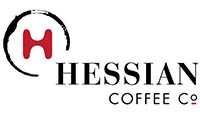
Coffee Strength on Packaging
Why do we have numbers ranging in the supermarkets from 1 to 5? Some have dots increasing in a neat line or different shades of colour to identify what strength a bag of coffee is?
Surely strength is made up from the how much coffee is dissolved in the liquid? Take for example a nice gin and tonic. If you have a shot of gin in a pint of tonic it is going to be weak! Now lets take a shot of tonic and a pint of gin, strong eh! Every diluted beverage is the same whether it’s a cup of freshly brewed loose leaf tea. A refreshing orange squash or a pint of shandy. It’s all about the ratio to get the correct balance for the perfect drink.
Producing coffee (espresso or filter) does not allow all of the coffee bean to be dissolved into the liquid. In fact, only around 30% of the bean gets dissolved. Generally, this leaves wet soggy coffee grounds behind when the liquid is removed. Now within this 30% that is dissolved, only around 20% approximately is what we want to go into the cup. This is your caffeine strength.
It’s about the Brew
No matter how you brew the coffee. No matter how much liquid you use you can only ever get the same amount of extracted caffeine from the coffee beans. That’s just life and chemistry, no magic involved.
We can however control some of the other elements to get the best flavour. Water to coffee ratio as mentioned earlier with my G&T analogy. Use excellent quality water and filtered where possible. The time the grounds sit in the water. The correct water temperature and even down to the correct grind size for the chosen brew. Espresso, cafeteria, V60, chemed, or a pour over for example all should have different particle sizes. All these variables will have an impact on the extraction being either weak or strong.
Country of Origin
The wonderful taste coffee gives us is dependent on the country of origin. Processes used in the harvesting. Blending by the expert roasters and the physical process of the bean roasting. Flavour and aroma is brought out during roasting. Because of this, it is a rule that the darker the roast the more pronounced the bitterness will be. The darker the roast the least acidity in the final drink product.
So to summarise. A dark roast or a light roast has the same amount of caffeine extracted from the beans. So when our supermarkets are mentioning strength, I feel this mostly references the roast profile i.e. a mild, a medium or a dark roast. The coffee descriptors will give you what you see in the cup.
Growing areas
As a guide to growing areas, South America’s (Costa Rica, Guatemala, Honduras, El Salvador and Nicaragua) are said to have a clean and bright taste. Natural acidity, well-balanced and with a mild to medium body.
Colombia, Brazil, Ecuador and Bolivia make up much of coffee growing countries in South America. They offer a very mild-body. Whilst still being a light, clean cup, these coffees are also a bit creamier, often with a slight chocolaty after-taste.
Brazilian coffee varies in profile from spicy and rich to mild and fruity. Great for a filter coffee!
The Africans are more complex & bold. Generally a sweet, fruity and floral coffee taste. With the most popular roasts coming from Tanzania, Ethiopia, Kenya, Uganda, Rwanda and Burundi.
Asia beans are more earthy, and with a fuller body.
Ultimately, it’s a personal choice. Just like having a shot of tonic in a pint of gin. Strength guides on supermarket packaging can in my opinion be a bit misleading.
